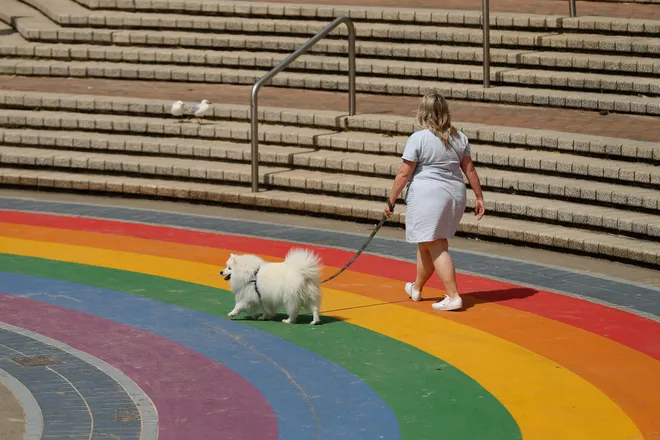Want to earn extra money through a side hustle? Here's why 1 in 3 Americans do it.
The gig economy is still big in the U.S. and growing.
More than a third (36%) of U.S. adults are working a side hustle – earning money in addition to their main source of income – according to a new Bankrate survey. They are earning more than they did last year, with the average side hustler making $891 a month, up from $810 last year.
Though the number of respondents who said they had a side hustle was down slightly from last year's 39%, it is way up from 2019 when Bankrate first started surveying respondents about their extra gigs, Ted Rossman, Bankrate senior industry analyst, told USA TODAY. By comparison, in 2019, 19% of respondents said they had a side hustle.
"More people are side hustling because of inflation and because of high interest rates," Rossman said. "Technology has made it easier as well. A lot of people are doing work from home and things online and via various mobile apps."
Updated numbers are not widely available, but in 2018, Marketdata estimated the gig and side hustle market at $2.58 trillion. That year, analysts thought 36% of the U.S. workforce of 160 million already had an extra gig job. That number was forecasted to grow by more than 50% by 2027 to 83 million Americans working a side hustle.
And then Covid happened.

The number of people who picked up a side hustle spiked during the pandemic, said Bryce Colburn, lead editor covering small businesses for USA TODAY/Blueprint, a personal finance content partner to USA TODAY.
Colburn, whose journalists have written several stories about side hustles, said that while he can't say the side hustle industry grew directly because of COVID-19, the spike in the number of people who had side hustles during and after the pandemic is pretty clear.
"Remote work has definitely been a huge factor in the growing of side hustles," Colburn said. "We now have technology to do remote work, which then means that now if you're home, you also can work on other things."
Who is doing side hustles?
All ages are taking on side hustles, but more millennials and Gen Zers seem to have side hustles, Colburn said.
Colburn's observation matches results from Bankrate's study: Gen Zers (ages 18-27) had the highest number of people with a side hustle (48%) compared with millennials (ages 28-43) with 44%. Among Gen Xers (ages 44-59), 33% had an extra job, while 23% of baby boomers (ages 60-78) said they had a side gig.
Parents of children under 18 are more likely to have a side hustle (45%) than adults without children (36%) or those with adult children (28%), according to the survey.
Some workers may even be doing their side hustle during their remote full-time job, Colbun said.

Here's some more highlights from Bankrate's study:
- More people started side hustles after 2022: More than half or 52% of side hustlers started less than two years ago.
- Side hustlers spend their money differently: 37% use some of their money from gigs on discretionary spending; 36% use the extra cash for day-to-day expenses; 31% put some money into savings; and 20% use the income to pay down debt.
- Side hustling isn't temporary: 32% of respondents think they'll always need an extra job to pay the bills.
How much are people making from side hustles?
Nearly two-thirds of side hustlers, or 63% in the Bankrate survey, said they are making more than $100 a month, and more than 1 in 4 respondents, or 28%, are making more than $500 a month.
Younger generations and men are more likely to have a side hustle, and make more. Millennial side hustlers report making an average $1,129 a month, and Gen Zers make $958. Gen Xers make $751 and baby boomers make $561 a month.
The gender pay gap is also alive in the gig economy: Only a slightly higher percentage of men (38%) have side hustles compared with women (33%), but men make an average of $1,034 a month, while women average $735 a month.

Why are people taking side hustle jobs?
High inflation and rising housing costs, in addition to regular monthly bills and the desire to travel and save money, are causing more people to look to side hustles, Rossman said. "Americans are still finding that one job isn't enough. The cost of living has risen sharply in recent years," he said.
But Rossman said he also takes with a grain of salt the study statistic saying 32% of people with a side hustle felt they'd always need it to make ends meet.
"Most of these people are relatively new to it, and yet they're saying they think they need to do it forever," he said, since more than half have had a side hustle for two years or less. "Maybe things won't be as bad as people fear.''
Still, "it's very much a spending story,'' he said. "Last year, it was all about day-to-day expense ... "This year, it's more fun spending and 'I'm going to side hustle to take a nice vacation or splurge on some electronics' or something like that."
Colburn said his reporters were surprised to find that while many side hustlers said they were doing the extra job because they needed the money, "50% of people say that they're doing it for fun and not for money.''
Side hustles:Why do women look for freelance, gig jobs? Avoiding the 'old boys network' at the office.
What are some of the best side or most popular gigs?
Side jobs that involve e-commerce, such as eBay or Etsy or using social media to funnel people to an e-commerce platform are popular, Colburn said.
Meanwhile, some of the easiest side hustles, according to Blueprint, are house sitting, dog walking, freelance work and grocery delivery. Blueprint also suggested some side jobs to avoid, such as online survey taker, ride-share driver and mystery shopper, saying they may not pay enough for the time invested.
Colburn also said it's important for side hustlers to understand how their taxes are affected by their extra gigs.
A lot of people don't realize that they have to pay taxes on anything more than $400 earned from a second job or that a successful side gig could push you into a higher tax bracket, he said.
Rossman said he believes the number of people doing side hustles will continue to grow, especially as the workforce continues to change and people either choose to job-hop or can't maintain job stability.
Some people may also turn their side hustle into a passion project or even their next full-time job, he said.
Rossman gave a final bit of advice: if you are going to do a side hustle, walk before you run.
"I think a side hustle is a great way to drum up some extra money, maybe pay off credit card debt,'' he said. "But be wary of things that require a big upfront investment. Sometimes they can be an outright scam ... other times it's maybe a multilevel marketing thing where you have to stock up on a bunch of inventory.
"Explore it first, take it for a test drive ... prove out the concept before you dive headlong into it."
Betty Lin-Fisher is a consumer reporter for USA TODAY. Reach her at blinfisher@USATODAY.com or follow her on X, Facebook or Instagram @blinfisher. Sign up for our free The Daily Money newsletter, which will include consumer news on Fridays,here.
Disclaimer: The copyright of this article belongs to the original author. Reposting this article is solely for the purpose of information dissemination and does not constitute any investment advice. If there is any infringement, please contact us immediately. We will make corrections or deletions as necessary. Thank you.







